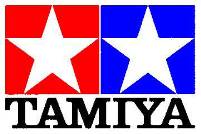
1970 Issigonis’ 9X Mini
Issigonis was a whizz at designing small cars as his mindset was wholly arranged to this end; which probably explains why his larger cars were not as successful as the Mini was. However, the Mini was designed in rather a rush in response to the oil crisis so had certain deficiencies. Issigonis intended to correct the design with a new, even more efficient, small car.
Sir Alec’s design team at the Longbridge works developed numerous variations on the Mini under the code-named, 9X. Pet projects included in the programme were a highly efficient ‘DX’ engine design, an innovative gearless transmission system, using a torque converter, and even a steam powered engine for the Mini.
The 9X, under the design number ADO20, was completely new. Built to Issigonis most stringent set of goals nothing in the prototype cars was an off the shelf item from the parts warehouse. It was bold, it was radical, it was incredible.
Compared to the Mini, the seminal small car, the team shortened the 9X by four inches, reduced the number of panels the body was made from (to save in production time and costs) and created more leg and head room! The car was 94lb lighter than the mini (having some aluminium body panels), and had better sized sliding side windows, later replaced by winding ones, so the driver could actually get his head out the side to help reverse more accurately. In fact, visibility generally was improved with a taller area with thinner pillars containing more glass. Everything was classic Issigonis, even the strip speedometer in the slim fascia screamed minimalist. If there was a problem area it was that the 9X suffered similarly to the Mini from a somewhat compromised driving position. External door hinges and seems became concealed and front-end proportions were modified to provide efficient installation of a more compact '9X' engine and the Battery which had moved forward from the boot to under the bonnet. In another internal space provision step the spare wheel exited the car to a cradle under the boot rather than being housed inside it.
Later external styling was done by Fred Boubier and Syd Goble and looked typically 1970s with its squared-off corners. It was also a hatchback, desired by customer focus groups but Issigonis thought unnecessary in a small car. Interestingly, Sir Alec bowed to public opinion, something he was not usually known to do.
A really promising part of the design was the new DX engine range offering 750cc to 1000cc engines. Again, they were all new, lighter more fuel efficient yet could give 60bhp-per-litre. Taking just nine months to get from the drawing board to the test bed the engine design had an overhead camshaft and a cam-belt instead of a chain. In keeping with the lightweight philosophy, the engine had an aluminium alloy cylinder head and sump so only the cylinder block was cast iron effectively making the new 9X engine/gearbox package weigh around 200lbs; considerably less than the Mini’s 340lb package. Another clever idea was to design the engine as a modular system so that increasing the capacity of the engine and even the number of cylinders. A 6-cylinder DX engine was later put into a MG Metro prototype in the mid-1980s but by that time Issigonis was very much on the periphery of BL thinking and it never came to anything. The important factor in producing the DX engine was to ensure everything was a close to the necessary tolerances as could be achieved. This proved to be the downfall of the DX unit as such close tolerances were too costly to achieve in mass production. This was a shame as the engine was very good and the new two-shaft gearbox design housed beneath and behind the engine (in 1800 style), was apparently much quieter than the unit in the Mini. A 1500cc 9X achieved a top speed of 83mph while on test.
The suspension was also very different to the Mini. Issigonis dropped the Moulton Hydrolastic system in favour of much simpler rear beam axle and MacPherson struts at the front. This sort of approach was much cheaper to produce and more easily ‘tuned’ to give a softer, more compliant, ride. This stands as a rare example of where Issigonis would use a conventional design if he thought there was a genuine benefit.
Final development of the 9X was well into the British Leyland period and there were many things mitigating against 9X production possibilities. Largely these reasons come down to a lack of money and simple economic reasoning. Despite the undoubted qualities of the 9X it never got beyond the prototype stage. Why would BL put the considerable money into all new tooling and production line technology for a new ‘mini’ when the original Mini, and the 1100, were still selling very well. Profitability and efficiency were very high on the BL board’s agenda due to the many financial problems the group had, largely down to the Austin-Morris models. British Leyland, under Donald Stokes, needed to crack the medium car market where the 1800 was a poor seller, not dive back into a market they were already well-established in. The brilliant 9X car and DX engine simply required too much investment to get them into production.
Issigonis, now retired, was kept on as a consultant. He used 9X as his personal car for over 15 years, continually working on the 9X ideas through the 1970s and 1980s and repeatedly bringing the car back to the management’s attention. both George Turnbull and John Barber drove the 9X and loved it, but the financial risks could never be justified. Even when a BL Director tried a standard Mini fitted with a DX engine the result was the same. The Director loved the car and enthused about how well the car ran, but still the chances of the engine reaching production were zero.
John Sheppard would later say that: “Of all the cars I worked on, the 9X cancellation was the biggest blow,”. BLMC engine designer through 1970-76, Ray Battersby, added: “I was at Longbridge when the 9X was being shot down by Harry Webster. Issigonis’ arrogance cannot have helped his cause at all, though all those who worked for him that I knew held him in very high regard.”
The 9X proved to be the last car fully designed under Alec Issigonis.











Rod converted the Fujimi kit to create this tribute to Alec Issigonis and his pioneering drive. Fujimi's Rover Mini Cooper 1.3 Racing, kit #12505 in 1/24th scale was a 1994 re-lease of the previous year’s kit. the original Fujimi Rover Mini Cooper 1.3i, kit #12501 from 1994, has been released multiple times with additional parts, and/or decals, to replicate other Mini models but the basic sprues were always the same. In conjunction with Tamiya’s kit this release provides and interesting continuation of the Mini as it evolved through the 1980s and 1990s.
This model required work to the bonnet to capture the different shape and shut lines of the 1970 9X prototype, lots of filling and sanding, then priming, refilling and more sanding. All the filling was done with Humbrol model filler. There are also changes to the underside and front valance as the 9X had a different engine and the gearless drive system fitted too. Some parts from the Tamiya Morris Mini Cooper kit were also required to capture the look of this ad-hoc prototype car.
The model is painted with Halfords acrylic car spray paint for the body with acrylic and enamel paints from the Humbrol, Revell, Art-Deco and Citadel ranges.
Built for the Mini-Issigonis display at IPMS(UK) “Scale Model World” show in 2019 the 84-year-old Rod is now struggling with arthritis and numbness in his fingers yet he continues to build and (for the most part) enjoy his model making. No-one should every feel they have to be perfect in everything, this hobby is fun!
RETURN TO :-
